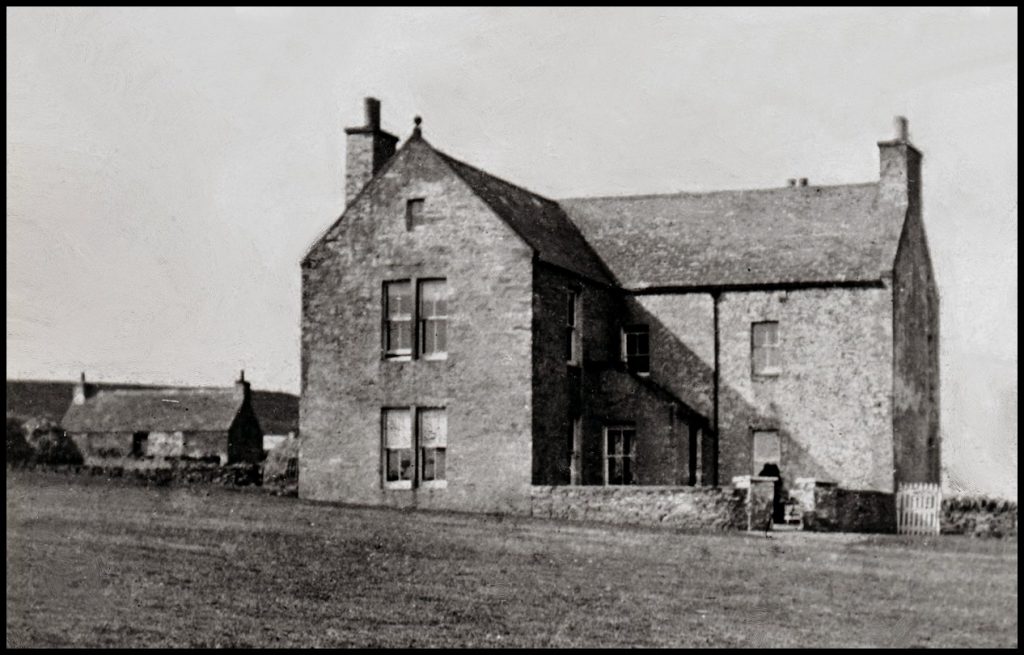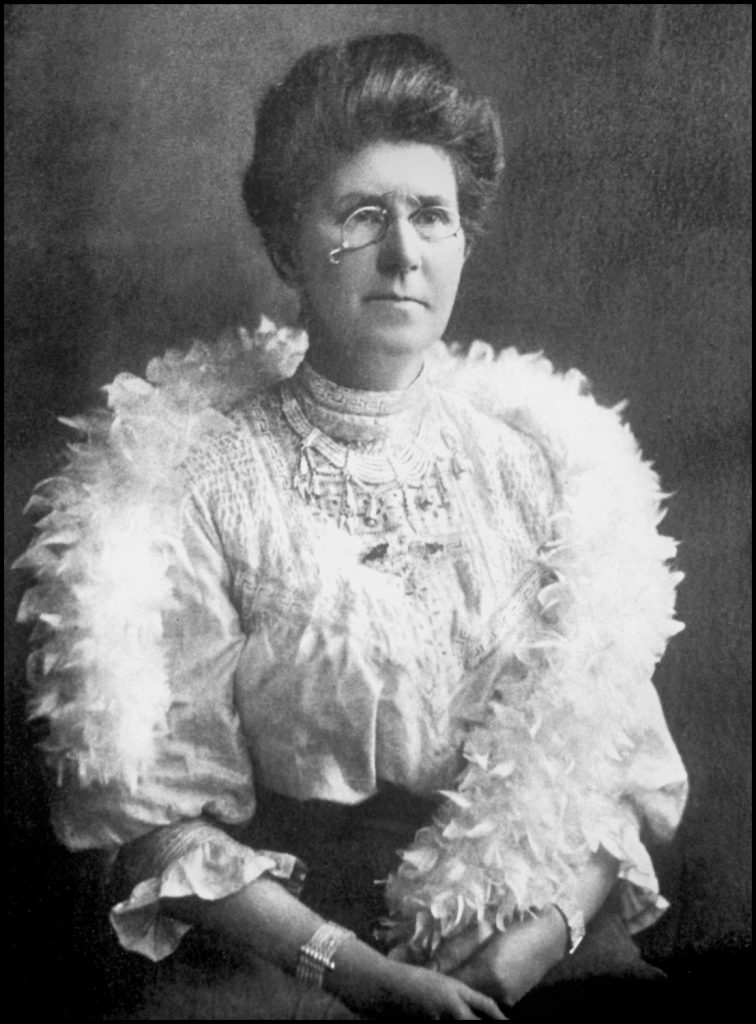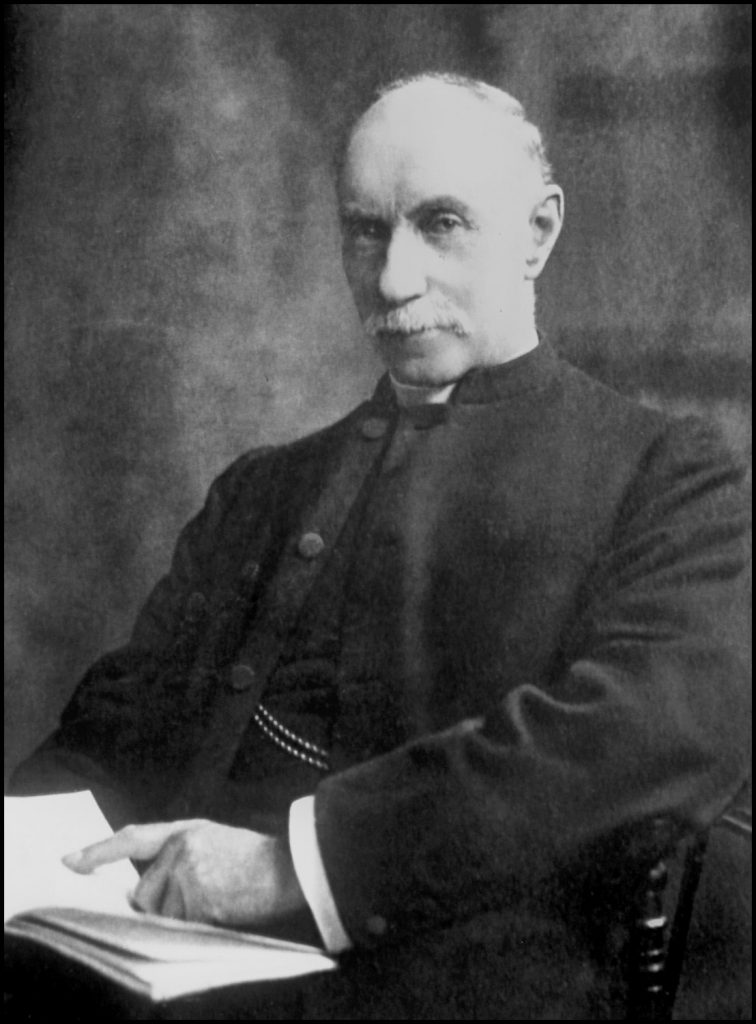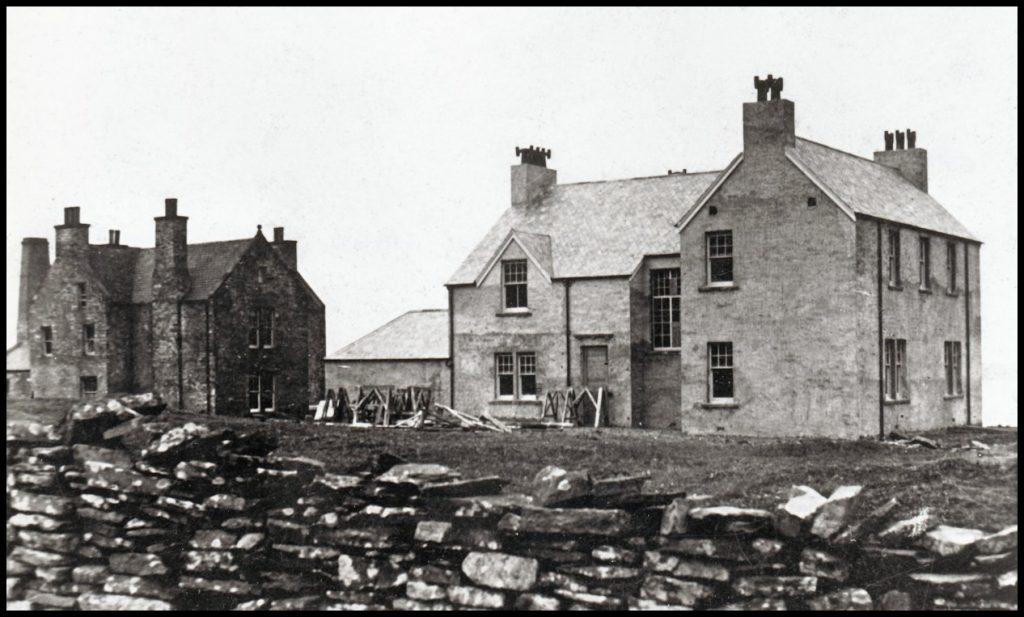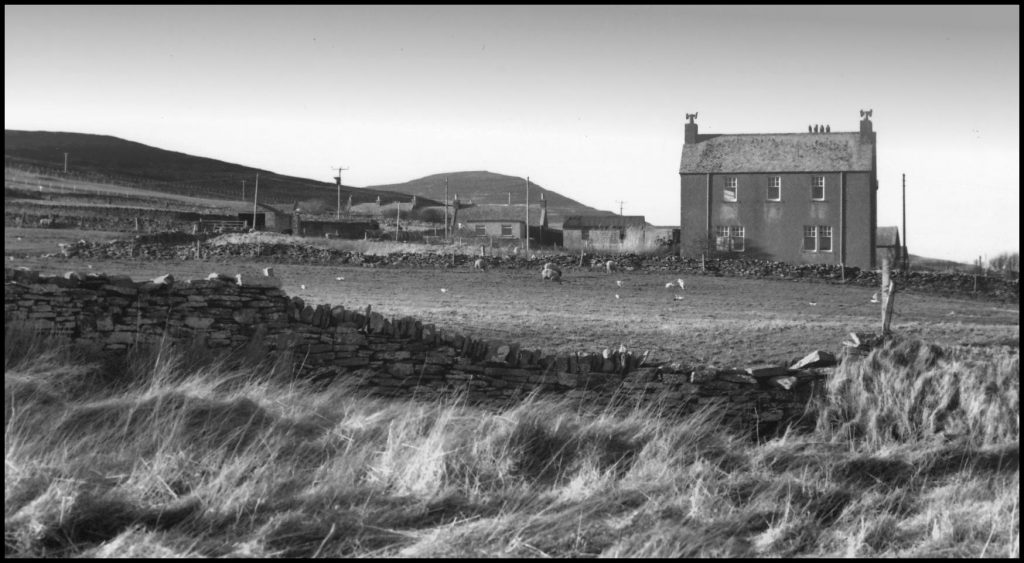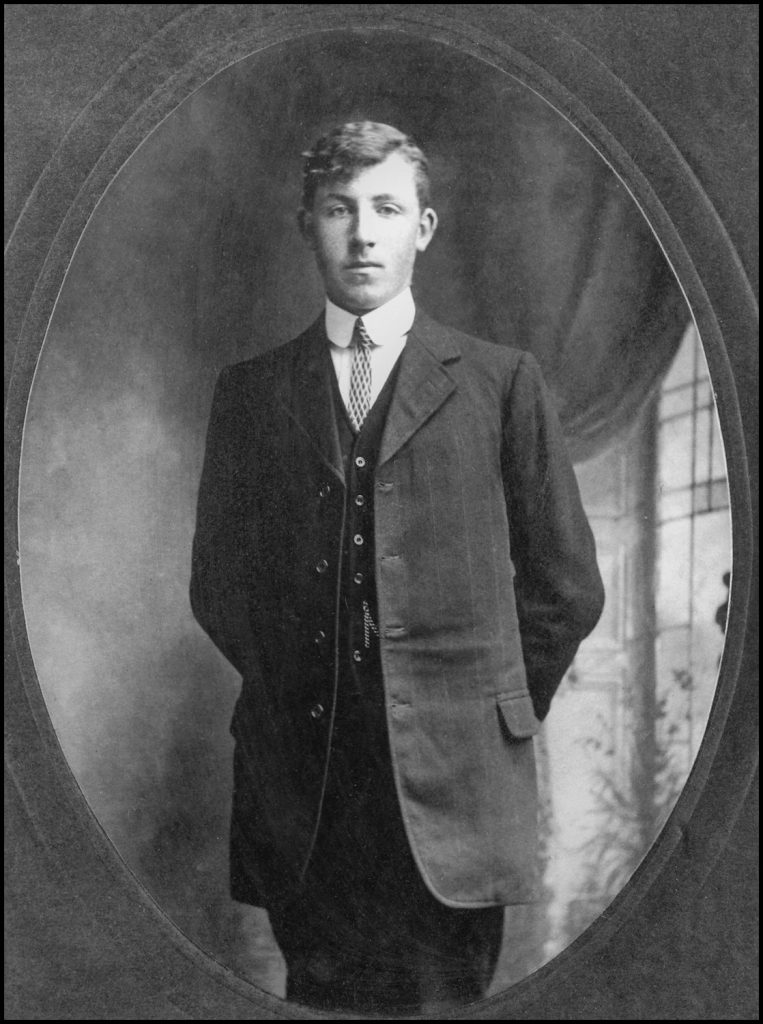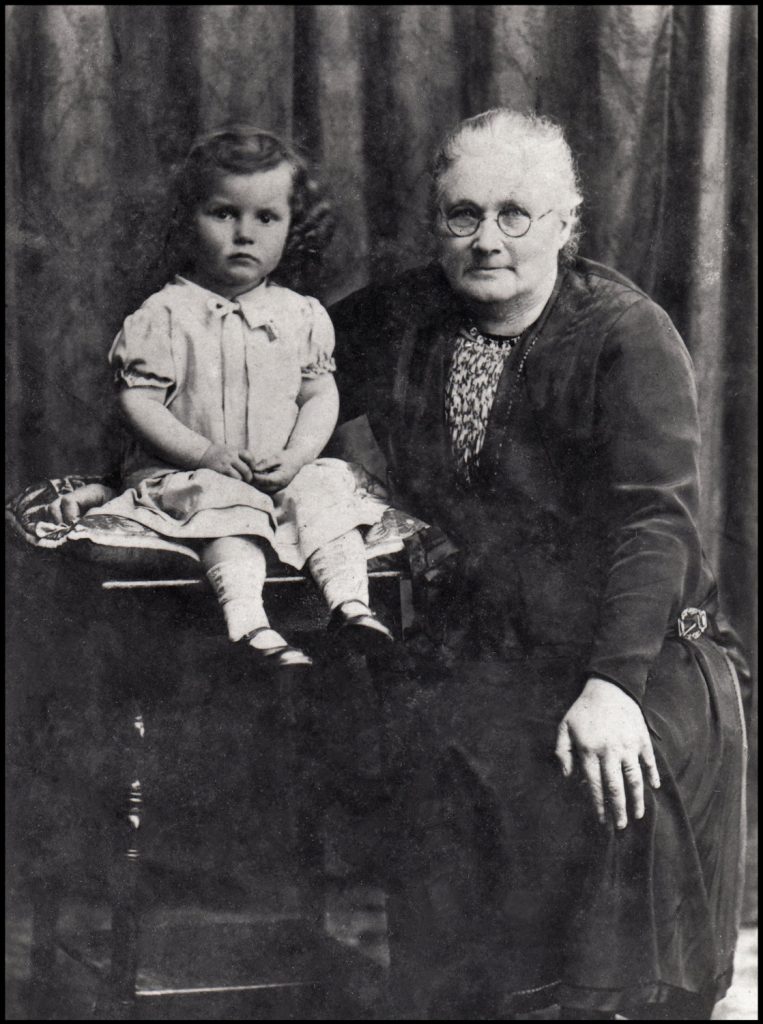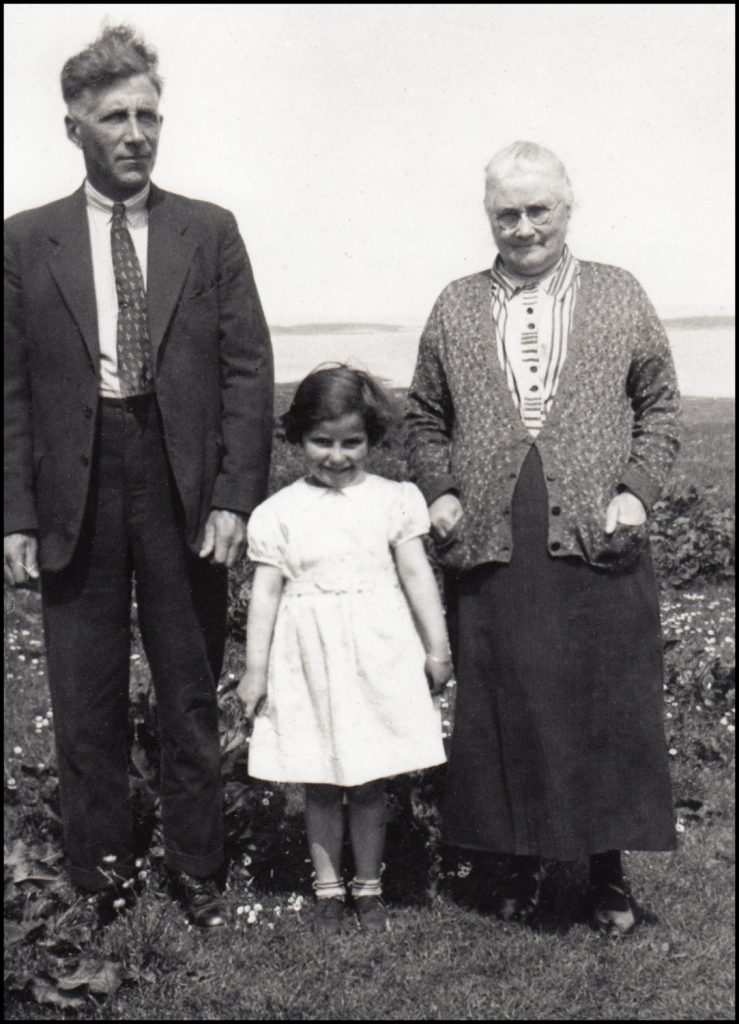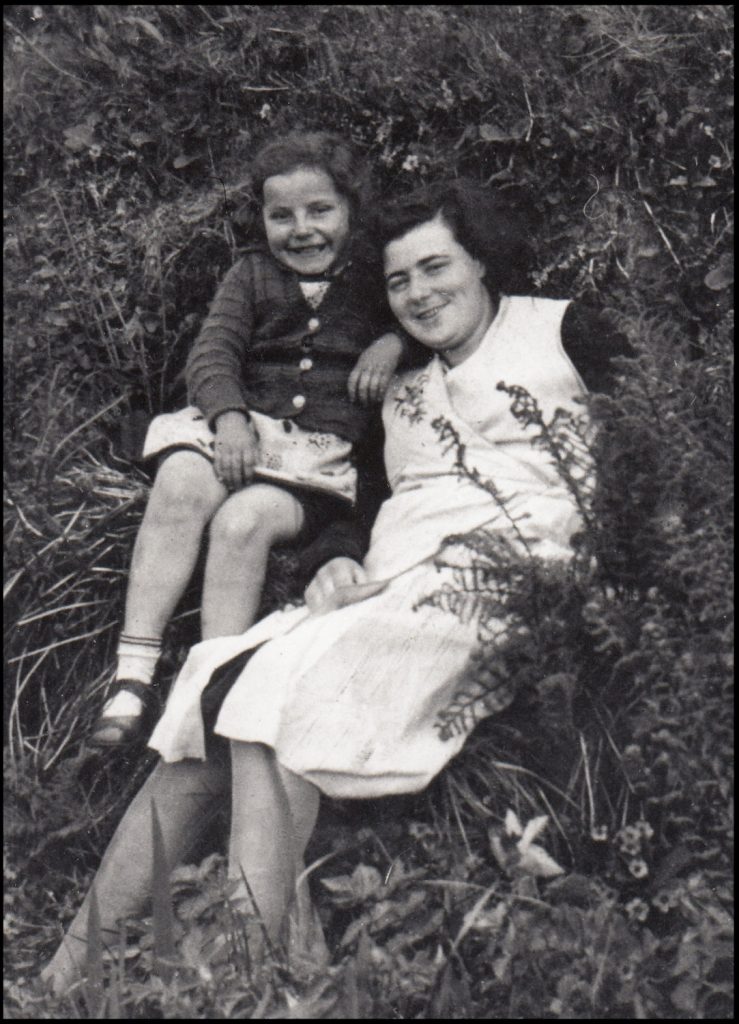There was an area of land in Knarston known as Vicarage land, of which, in 1503, the skats, or taxes, were drawn by the (Catholic) Vicar of Rousay. This land, represented by the later Rousay Glebe, came on record again over a century later.
At the time of the Reformation, Church lands which had not already been alienated otherwise, were annexed to the Crown, and many years were to pass before all Protestant ministers received adequate provision of manses and glebes. After a time, Acts of Parliament did make provision of a sort, but that was slow in being put into effect.
On May 1st 1626, it is recorded that George Grahame, Bishop of Orkney and Zetland, “compeared upon the ground aftermentioned,” and “with advice of Magnus Craigie in Skaill, Rolland Ingisger in Brugh, and Hew Craigie there, three honest and godlie men of yle and parochine of Rousay, market, designit and appointed to Mr. David Watsone, presently minister actually serving the cure at the Kirkis of the yles of Rousay, Egilsay, Wyre and Inhallow – All and haill the Threepenny land of auld callit Viccaris Land in the toune of Knarston with the house biggit thairupon, sumtyme pertaining to the viccar of the sd yle of Rousay, presently possesst and occupyit be Edward Alschunder…..to be ane mans and gleib for the said Mr. David Watsone.”
And there a manse and glebe were situated for many years afterwards.
The Established Church Manse was situated close to Knarston, and when the census was carried out in 1841, it was occupied by Mrs. Isabella Ritchie, who was 25 years of age. She had three female servants, 45-year-old Mary Rendall, Jane Johnston who was 40, and Betsy Mowat, who was just 12 years of age.
In the census of 1851, the building was called the Manse of Rousay. Head of the household was 46-year-old minister James Gardner, a bachelor who was born in Linlithgow. Living under the same roof were five servants, all of whom were unmarried. The oldest of these was 29-year-old Janet Flaws. Janet Craigie was a 21-year-old house servant, and Simpson Skethaway (27), Alexander Logie (23) and James Louttit (13), were all farm servants.
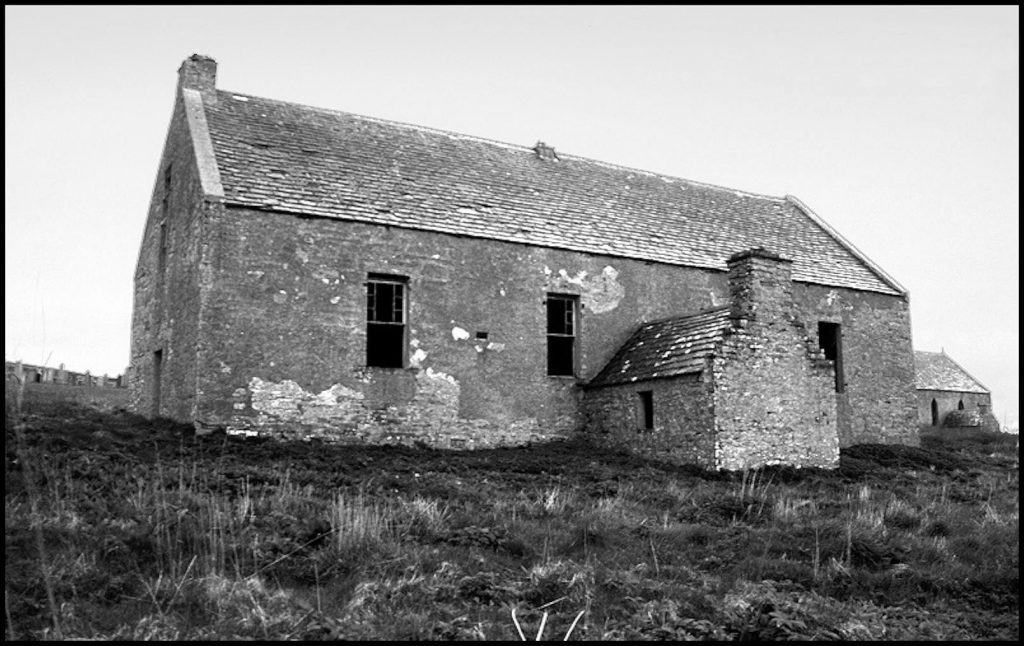
The minister was away from home when the census was taken in 1861. By that time he was married, and his 33-year-old wife Harriet Corsie, daughter of William Corsie and Janet Louttit, lived at the Manse with her four-year-old daughter, also christened Harriet. Allan, one of Harriet’s brothers, a 23-year-old ploughman, also lived there – as did domestic servants Barbara Simpson, a 23-year-old from Stromness, and 18-year-old Ann Thompson, from Walls, Hoy.
In 1871, parish minister James Gardner was in his 67th year, wife Harriet was 43, and their daughter Harriet Helen was 14 years of age. They employed two general servants; Jessie Phillips, a 23-year-old from Harray, and 15-year-old John Corsie; and one farm servant, 19-year-old James Robertson.
The minister’s wife died prior to 1881, but widower James Gardner had the company of his daughter Harriet, who by now was known as Harriet Stevenson, having married a farmer of that name. By this time they had a daughter, who continued the family tradition of being christened Harriet.
By 1891, the Established Church Manse was occupied by a new minister of the parish, 46-year-old Alexander Spark, who was born in Montrose. He lived there with his 35-year-old wife Jane Oatt and their seven children, Anita, Hilda, Alexander, James, Veira, Archibald, and Edith. The Reverend gentleman and his lady wife are pictured below.
Apparently the accommodation provided at the manse was sub-standard according to the new incumbent. Here is a newspaper report from the Peterhead Sentinel, published on August 17th 1888:
The Reverend Alexander Spark, erstwhile minister of Boddam, has been little heard of since he immured himself in the lonely solitude of Rousay; but it may interest his many friends and acquaintances this quarter to hear that he is conducting a lively and interesting litigation with his heritors in regard the condition of his manse. It was at one time in the Court of Session; but latterly it has been under the cognizance of the Sheriff-Substitute of Orkney, who has just issued a most elaborate and lengthy decision. His lordship sustains the claim of Mr Spark that his water-main should have a gun-metal stop-cock, but he refuses a whole lot of other claims by Mr Spark, who has apparently been demanding bed-room accommodation for two more people and byre accommodation for two more cattle, and sundry other luxuries. Still, Mr Spark, I gather from the interlocutor, has made good his title to “zinc sash chains” for his windows (the heritors wanted to put him off with ropes) and white marble chimney-pieces in his dining and drawing room; and he has triumphantly vindicated the claim of a parish minister be provided with a boiler in his scullery at the expense of the heritors. Altogether Mr Spark is to have his manse repaired and altered to an extent involving a cost of £600, which is nearly a sixth of the gross rental of his parish. And I suppose after all a minister perhaps preaches none the worse because he has been fighting with the heritors over gun-metal stop-cocks and zinc sash chains.
Tommy Gibson writes about a new manse, built about 1908-9. ‘In 1906 the membership for the Old Kirk was 71, and the minister, the Rev. Alexander Spark received a stipend of £184. This money had a purchasing power of £9542.24p (1996 figures). The average farm worker earned about £16 per year. Purchasing power was £830. The Rev. Spark took a dislike to the old Manse, and about 1900 tried to get his congregation to build a new one for him. He took up a building surveyor from Edinburgh to examine the manse, claiming that the walls were damp. The Rev. took buckets of water to dampen the walls, just to make sure. He also wrote to General Burroughs, the laird who owned the parish, demanding the use of a house “worthy of my status, such as Westness House” while the manse was being built. He went to live in Kirkwall while the new manse was being built. The contract was awarded to Samuel Firth, building contractor, Harray, Orkney. The manse was completed in 1909 at a cost of approximately £900. The old manse was probably built about 1747-50: this would have made the building about 160 years old. It is a pity that a date stone from the old manse was not preserved. The old and new manse did not enjoy a good water supply. On the 17th of January 1908 a Vulcan water pump was bought by the Kirk at a cost of £6 19s 1d plus £18 5s 0d for piping and fittings. This was used to pump the water from Oro to the manse. Oro is the name of one of the strongest springs in Rousay, situated on the land of Knarston, below the house. The pump, known as a Ram, works by water pressure, broke down. This supply or the locality did not please the Rev. Spark. On the 4th of August 1909, the Rev. Spark was seen walking down to Oro, and hammering sounds were heard coming from that direction. William Sabiston, Redlums, and Malcolm Corse, Faroe, were working at the Glebe and witnessed this happening. A lock was broken and another one was lying at the other side of the pump. Two air cocks had been tampered with and the pump was not working properly. Later he lost the use of this pump. The pump was installed 94 years ago at Oro and it is still working perfectly, having had two major services in its lifetime. It is still pumping water up to Knarston.’
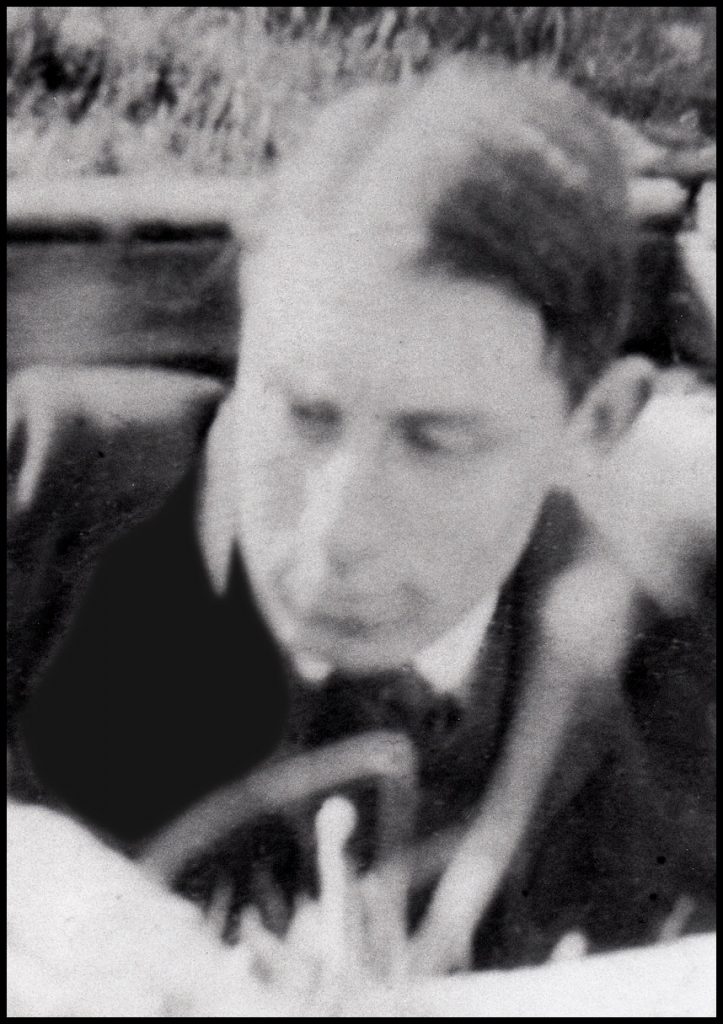
The name of the Reverend Spark’s son Archibald is inscribed on the Rousay War Memorial for all time.
Captain Archibald Graham Spark, M.C. – 9th King’s Own Yorkshire Light Infantry, was killed in action near Hénin on 9th April 1917, aged 28. He was buried in Grave D.3, Cojeul British Cemetery, St. Martin-sur-Cojeul, Pas de Calais, France.
He was born in Kirkwall on 14th June 1888, son of the Rev. Alexander Spark and Jane Livingstone Spark (née Oatt). The Orcadian newspaper reported his death in its ‘Our Roll of Honour’ section:
“Captain A. Graham Spark, King’s Own Yorkshire Light Infantry, who has been killed in action was the third son of the Rev. Alex. Spark, parish minister (retired) of Rousay and Egilshay. He was trained for the legal profession in Kirkwall and Edinburgh, and held appointments with the Straits Trading Company, and also in Edmonton, Canada. He joined the K.O.Y.L.I. as a second lieutenant, and had been at the front since September 1915. For more than a year he was adjutant of his battalion, and had subsequently been selected for a staff appointment. He had been several times mentioned in dispatches.”
Archibald Graham Spark was dead when the award of his Military Cross was announced in the 1917 King’s Birthday Honours List.
Archibald’s older brother Alexander followed in their father’s ecclesiastical footsteps, and recalls an athletic feat in his younger days whilst holidaying back in Rousay. The following account is taken from the Aberdeen Evening Express, dated May 11th 1954:-
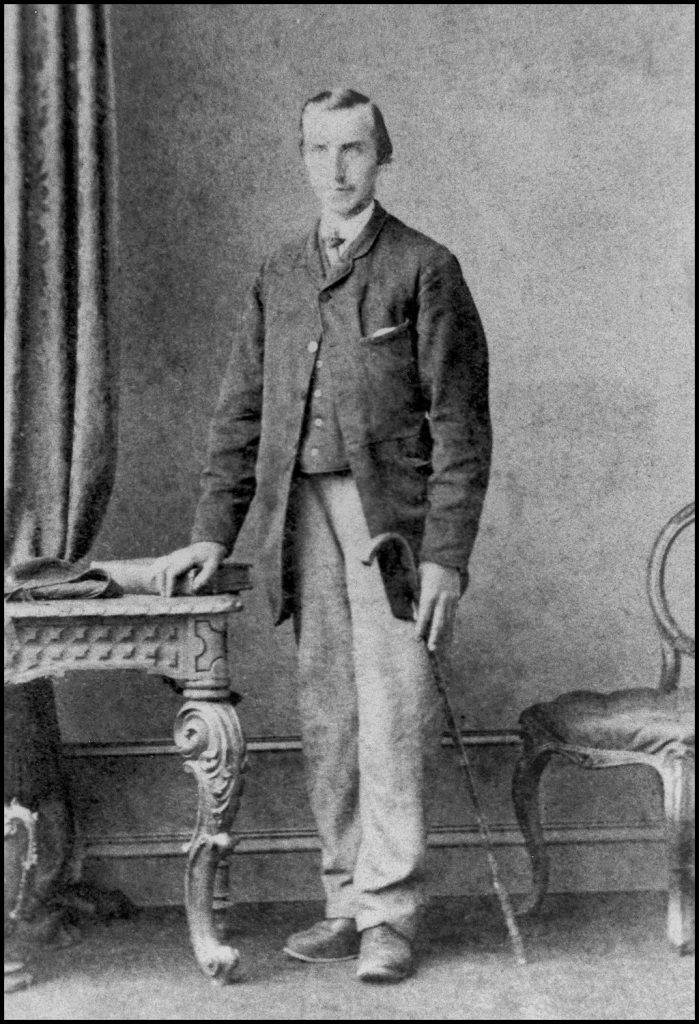
4-MIN. MILE? IN LESS IF I HAD TAKEN OFF JACKET – Minister
“The four-minute mile? I did it fifty-two years ago in the Orkneys wearing my ordinary suit and shoes – and thought nothing of it!”
The speaker, the Rev. Alexander Spark (71), 13 Dundonald Road, Glasgow. Are you sure about the distance? he was asked.
“Certain of it. Accompanied by my younger brother I ran between one mile post and another on the island of Rousay. I timed myself with my old iron-clad watch that never lost a moment in twenty years.”
“And I am quite sure,” he added, “that I could have done it in less than four minutes if I had taken my jacket off and really tried.”
Was he a trained athlete? – No.
“I never consciously trained in my life,” replied Mr Spark. “The life we young lads led in those days made us supple and fit – we didn’t need any scientific training.”
Mr Spark, who has been a Church of Scotland minister in Glasgow and Edinburgh for forty years, entered the feat in his diary at the time and only looked up the entry after he had read accounts last week of Roger Bannister’s record-breaking mile.
“I was nineteen at the time and a student at Edinburgh University,” he said. “I had gone back to the Orkneys for a holiday – to the place where my father was parish minister for thirty years.
I don’t know why I started the race, I suppose it must have been high spirits, but I felt none the worse afterwards.
“When I was a boy at school I used to race the schoolmaster along the mile between the schoolhouse and my father’s manse. He had his cycle, one of the early models, and I ran. He never passed me until we reached a slope running to the manse.”
The Glebe
The first mention of occupancy of what we know today as The Glebe was made evident by the census of 1891. Head of the household was John Marwick, son of Thomas Marwick of Woo and his wife Ann Gibson, Broland. Born on July 5th 1826, John was 34 years of age when he married Margaret Gibson, daughter of Robert Gibson and Christian Hourston of Bigland. They went on to have eight children: Robert, born in 1861; Thomas William in 1863; Ann Margaret in 1865; John, in 1867; Mary Gibson, in 1870; Samuel Gibson, in 1873; Isabella, in 1876; and Elizabeth, who was born in 1879.
The Marwicks moved to farm Quoys, Evie, and come the census of 1901 the Glebe was occupied by James Craigie, a 30-year-old fisherman/farmer, and his wife Helen Louttit. James was the son of William Craigie and Ann Mainland, Cruar. Helen was the daughter of William Louttit and Helen Leonard, Digro. James and Helen were married by the minister Alexander Spark at Digro on April 1st 1892. They went on to have four children: James, born in 1892; John in 1894; Helen in 1896; and William, who was born in 1898.
The census of 1911 was carried out on the 5th of April. The Glebe at that time was occupied by John Craigie and his wife Ann. John, born on March 30th 1875, was the son of James Craigie and Janet Sinclair of Falquoy. His wife Ann was the daughter of John Russell, Evie, later Brendale, and Margaret Ann Moar Harper of Lylie, Birsay. They had eight children: John Russell was born in 1902; Jessie Alexina, known as Cissie, who was born in 1903; Annie Alice followed in 1904; Sarah, known as Sally in 1906; James, in 1909; Clara, in 1913; James William, in 1915; and Cathleen, who was born in 1918. This family later moved to Furse.
William Simpson Corsie, pictured above, was the son of John Corsie, Brendale, and Margaret Jane Skethaway, Knarston. Born in 1895, he married Lydia Gibson Baikie of Kirkwall in 1925. They lived at the Glebe had one child, Margaret Gibson Corsie, known to one and all as Peggy, who was born in 1931. She is pictured above right with her grandmother, Lydia Craigie Gibson, originally from Myres. She married Kirkwall baker James Baikie in 1888.

The opening three paragraphs at the top of the page were exacted from
The Place Names of Rousay, by Hugh Marwick
[All photos courtesy of the Tommy Gibson Collection]
